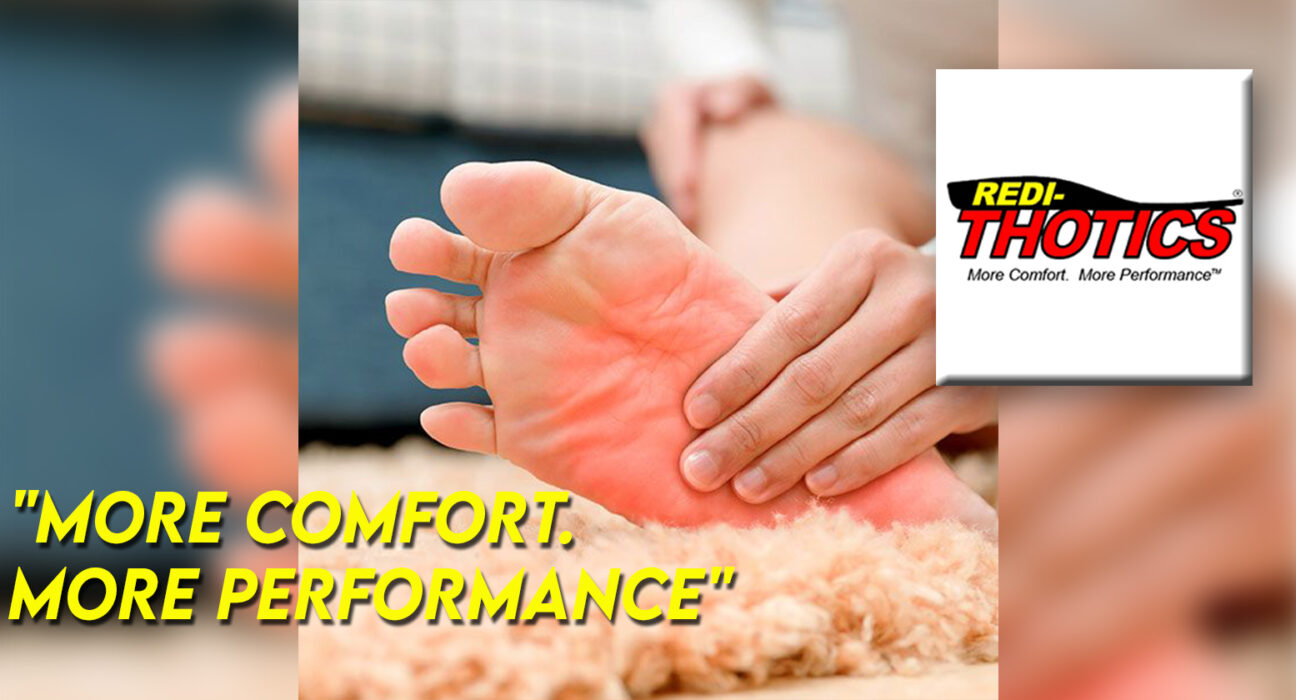You finally found relief from your foot pain with shoe insoles for plantar fasciitis—but after a few months, the discomfort has returned. If this sounds familiar, you’re not alone. Many people discover that the insoles that once worked wonders eventually stop delivering results. The good news? There’s usually a reason for it, and even better solutions exist.
In this article, we’ll cover why insoles can lose effectiveness, the signs that it’s time to replace them, and how upgrading to the right pair—like those from Redi-Thotics—can restore the comfort and support your feet need.
Understanding Plantar Fasciitis and the Role of Insoles
Plantar fasciitis is caused by inflammation of the plantar fascia, a thick band of tissue that runs from your heel to the front of your foot. When this ligament becomes overstretched or stressed, it leads to pain—usually in the heel—and often worst in the morning or after long periods of standing or walking.
One of the most common and effective non-surgical treatments is the use of plantar fasciitis insoles. These insoles help:
- Distribute pressure evenly across the foot
- Reduce strain on the plantar fascia
- Improve foot alignment and stability
- Cushion impact during walking or running
But even the best insoles need to be maintained, replaced, and properly fitted to continue being effective.
Why Your Current Insoles May Not Be Helping Anymore
There are several reasons your current insoles may no longer be working:
1. They’re Worn Out
Most insoles have a lifespan of about 6 to 9 months with daily use. If you walk a lot, work on your feet, or exercise regularly, the materials can wear down even faster. Once the cushioning flattens and the arch support weakens, the insole stops providing the correction your feet need.
2. They Were the Wrong Fit to Begin With
Not all insoles are created equal. Generic, over-the-counter inserts may not offer the level of structured support required for people with flat feet or serious plantar fasciitis.
3. You’re Using Them in the Wrong Shoes
If you’ve transferred your insoles into a shoe that’s too narrow, worn out, or unsupportive, the benefits of the insole may be canceled out by the shoe’s poor design.
4. Your Condition Has Changed
Sometimes, your feet or condition evolve. You may have developed flat feet or started to overpronate more severely. In that case, you’ll need flat feet support insoles that provide both arch correction and cushioning.
Signs It’s Time for New Insoles
Wondering if it’s time to make a switch? Look for these red flags:
- Heel pain has returned
- You feel more foot fatigue than usual
- Your arches feel unsupported
- The insoles are visibly compressed or torn
- The insole’s shape has flattened
- You notice ankle, knee, or hip discomfort
If you’re experiencing any of these symptoms, it’s time to consider an upgrade—ideally to something professionally engineered like what you’ll find at Redi-Thotics.
How to Choose the Best Replacement Insoles
Not all insoles are the same. If you want lasting relief from plantar fasciitis and additional support for flat feet or posture correction, here’s what to look for:
1. Firm, Anatomical Arch Support
Unlike flimsy inserts, quality insoles have built-in arch support to relieve pressure from the plantar fascia and keep your feet in proper alignment.
2. Deep Heel Cup
This feature keeps your heel stable, helping reduce stress on the ligament and preventing excessive foot movement.
3. Shock-Absorbing Cushioning
Choose insoles with multiple layers of foam or gel to reduce the impact from walking or exercising.
4. Contoured Fit
Insoles that mold to the natural curve of your foot provide better support and balance.
5. Durability
A good insole should last several months without losing its shape or support. Redi-Thotics insoles are built to endure long-term use while maintaining performance.
Why Redi-Thotics Is the Right Choice
Redi-Thotics specializes in high-quality, medical-grade insoles designed specifically to address foot problems like plantar fasciitis, flat feet, and overpronation. Their insoles are not just padded inserts—they’re engineered for function, alignment, and durability.
Here’s what sets them apart:
- Clinically inspired orthopedic design
- Designed for daily wear and athletic performance
- Suitable for all types of footwear—casual, work, athletic
- Available in multiple sizes for both men and women
- Trusted by thousands for proven results
Browse their full lineup of insoles on the Shop All page and find the model that suits your needs.
Flat Feet and Plantar Fasciitis: Double Trouble Needs Dual Support
If you’re dealing with both flat feet and plantar fasciitis, you’ll need insoles that correct your foot alignment while protecting your arch. Most over-the-counter products only provide cushioning, not structure.
That’s why insoles for flat feet from Redi-Thotics are such a powerful solution—they’re designed to offer dual-action support. They lift the arch, reduce inflammation in the plantar fascia, and improve your posture and gait from the ground up.
Real Results from Real Users
“I had tried every insert on the market, but they either wore out quickly or didn’t support my arches. Redi-Thotics were the first insoles that gave me true pain relief.”
“I work 12-hour shifts in retail and was struggling with plantar fasciitis. After switching to Redi-Thotics, I can get through the day without heel pain.”
“As someone with flat feet, these insoles changed the way I walk. I can stand longer, move better, and feel less tired at the end of the day.”
These reviews are just a small glimpse of how powerful the right insole can be. You can always reach out through the Contact Page to get help finding your perfect match.
How to Make the Most of Your New Insoles
Once you’ve upgraded your insoles, follow these tips to maximize their effectiveness:
- Break them in gradually over a few days
- Use them in your most frequently worn shoes
- Rotate them between shoe pairs if needed
- Replace every 6–9 months, or sooner if you’re active
- Clean them periodically to maintain hygiene and material integrity
Proper use and maintenance go a long way in extending the benefits of your insoles.
Final Thoughts: Relief Is Just One Step Away
If your current insoles are no longer working, don’t give up on foot support altogether—upgrade instead. The right pair of shoe insoles for plantar fasciitis can mean the difference between daily pain and daily freedom.
Whether you’re on your feet all day for work or dealing with chronic foot issues, Redi-Thotics delivers the structure, support, and comfort you need. Visit the homepage to learn more, explore the Shop All collection, or get personalized help through the Contact Us page.
Your feet have carried you this far. Now it’s time to return the favor.





